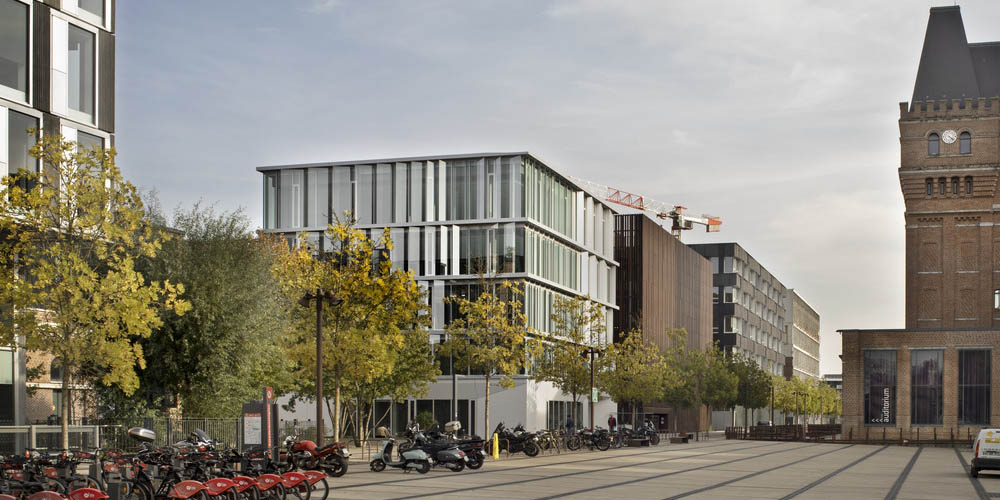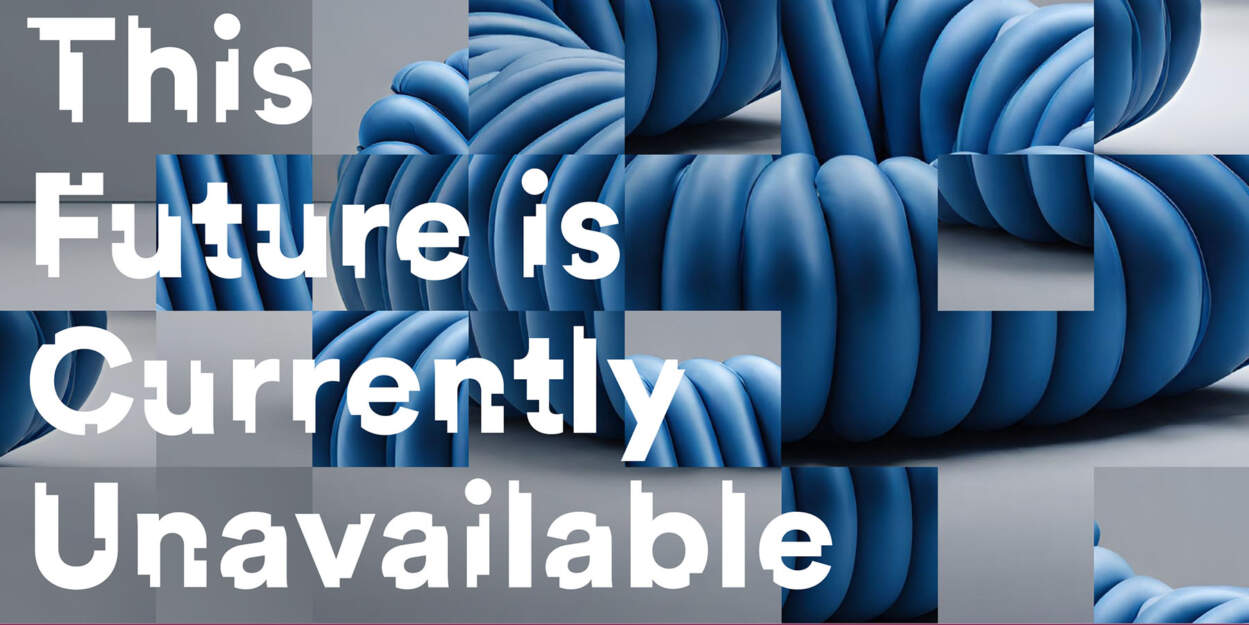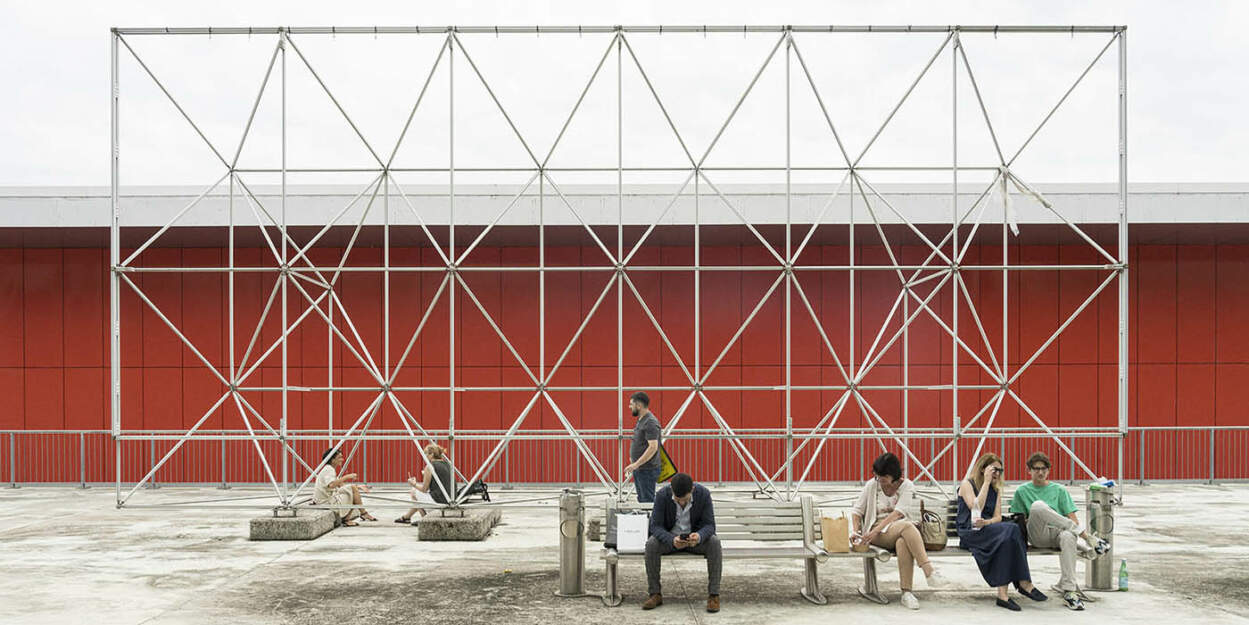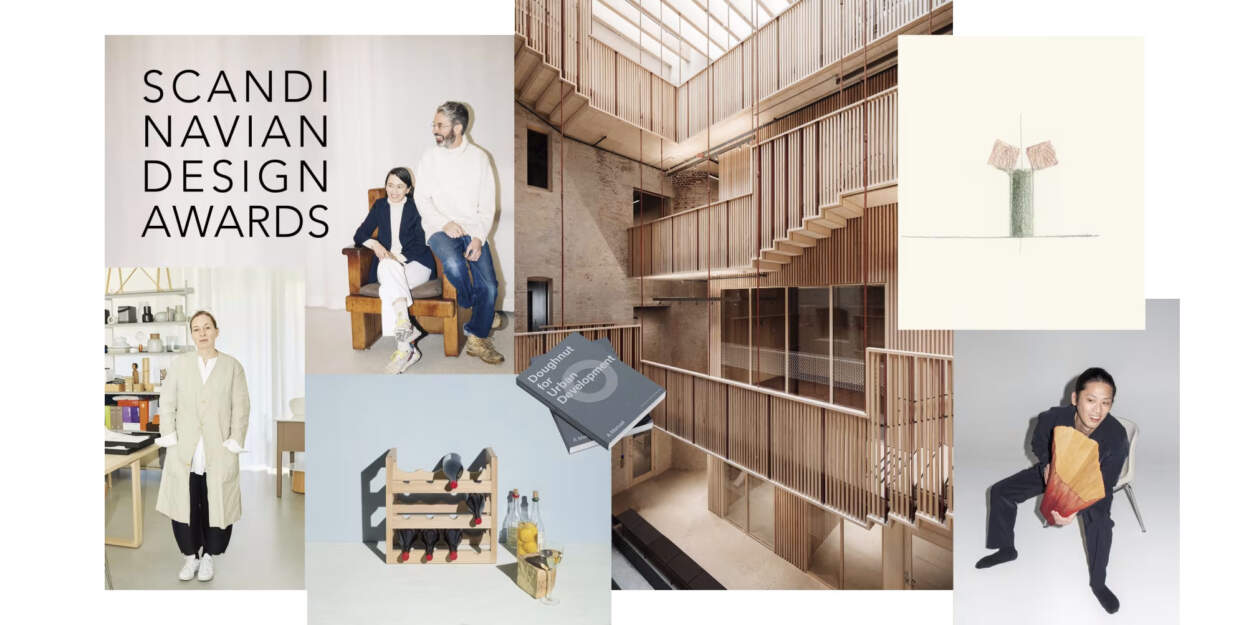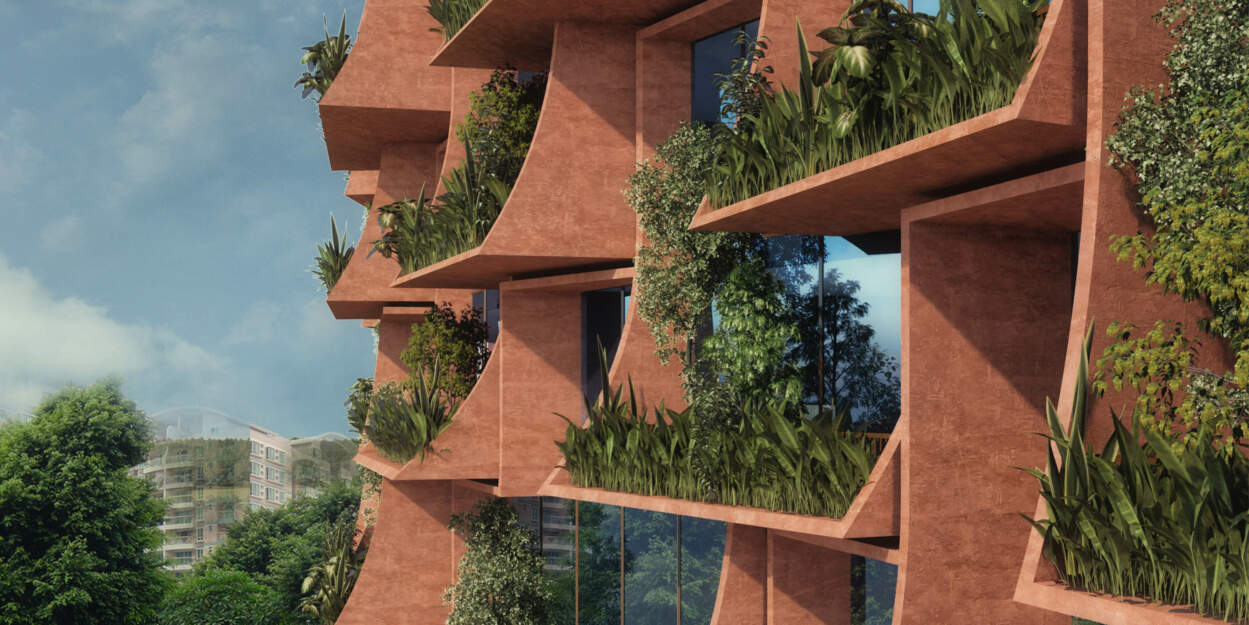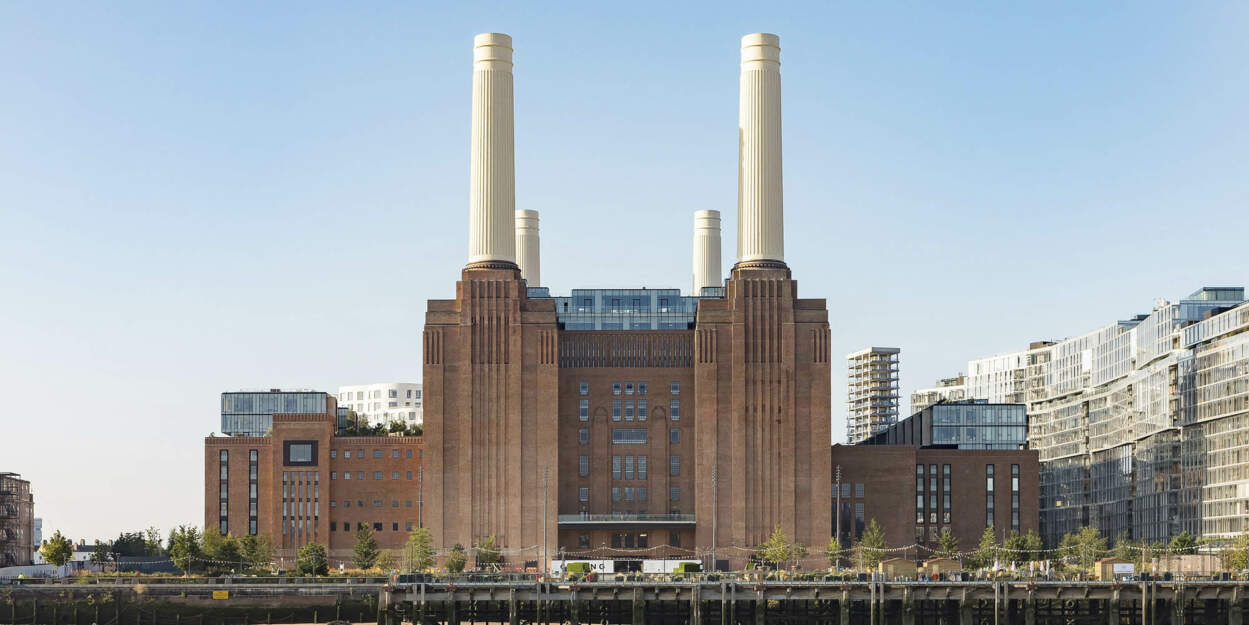Lucio Office Building in Lille by Barbarito Bancel is located in the new developing area situated on the banks of the Deûle within EuraTechnologies – the new economic hub dedicated to information and communication technology, which brings together many local and foreign start-ups.
The project site is open and complex, integrates into a plural public space, at various scales. It opens to the Cour de Bretagne, the large entry plaza of the new EuraTechnologies economic hub and faces Le Blan-Lafont.
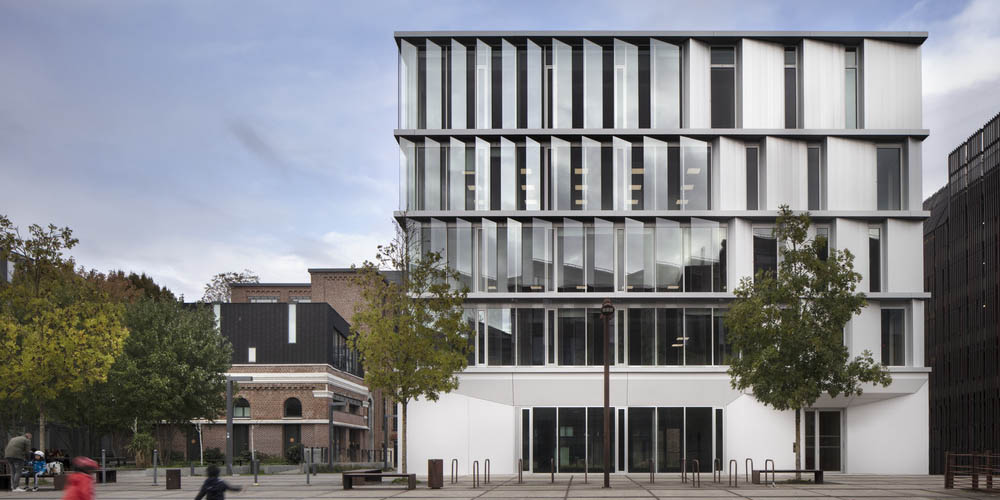
The Blan-Lafont, dominated by its Bell Tower, is the main building of this new urban project. It represents the heritage of the past thread mills of Lille and symbolizes the new economic renovation.
Around the main Le Blan-Lafont building, there are around fifteen office buildings, including: 5 R&D laboratories (Inria, CEA Tech, CITC, Silab, Adicode); major groups and corporations (IBM, Cap Gemini, RTE, Microsoft, SNCF, Engie, Vinci, Huawei, Le Village by CA, and more); a fab lab: TechShop Atelier Leroy Merlin just a 10-minute walk away; schools and training organisations: EFAP, Le Wagon, Wild Code School, PopSchool, EuraTeach, Aston, Enaco, Showroom Privé Ecole du eCommerce, Ineat Academy, etc.
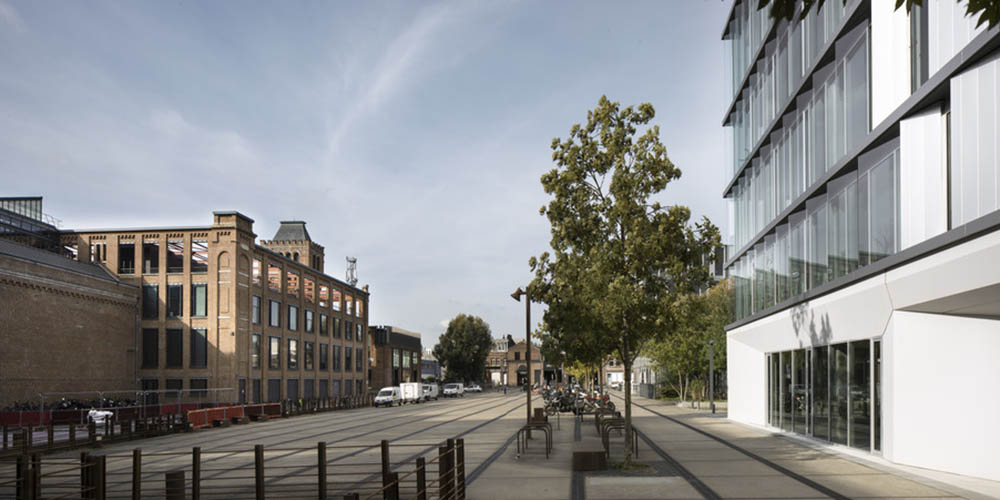
In its core, the project site regains a smaller scale that includes a square in front of the existing brick building. Lucio consists of an office space of 1 465 m², enclosed in a transparent volume that reveals the depth of the block. Flexible workspaces inside a low-consumption building have been created.
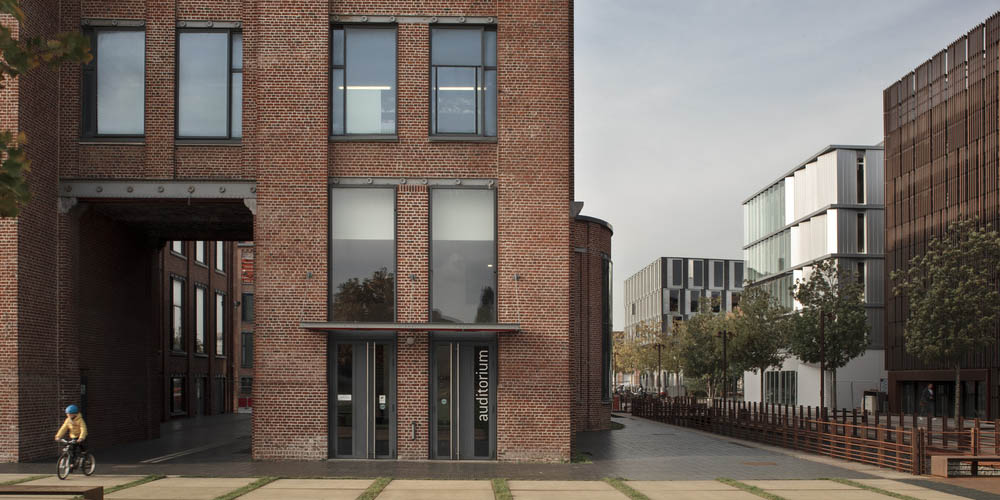
The four building facades are exposed to the sun most of the day, with no immediate building proximity. This exceptional situation offers a large view to the surrounding landscape and public areas, as well as noticeable illumination throughout the day to the interior spaces. However, this significant solar intake is controlled to comply with the current energy requirements.
Barbarito Bancel architects created an original composition of facades, a vertical glass louver facade positioned on a concrete base.
This evanescent plane plays with the fragmented reflections of its surrounding, made of brick, concrete and birch, and create deep visual perspectives into the permeable heart of the project site.
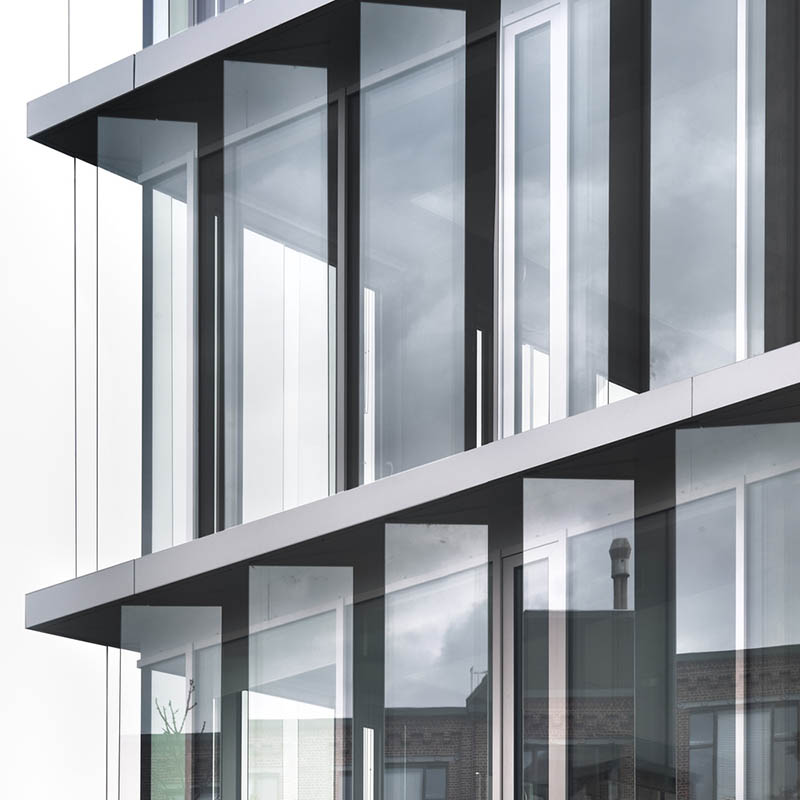
The vertical orientation of the glass louvers is chosen to protect from the southern sunrays and provide large visual perspectives. For the main glass facades – southwest and northwest – the project outlines the idea of a double skin that naturally creates a transparent and luminous curtain wall while protecting from the sunrays.
The secondary southeast and northeast facades are composed of single walls and alternate surfaces of opaque polished aluminium and glass surfaces that follow the overall geometry of the inclined glass sunscreens by prolonging the gradual and increasing change of rhythm of the inclined panels.
Finally, the glass architecture is completed with a more slender attic reaching to the sky. The main entrance of the building opens to the Cour de Bretagne square, the main public space of the district. It fits into the depth of the concrete base and reveals a neat and contemporary entrance lobby, with the use of elegant materials: concrete and wood.
The building core, which groups together the annex spaces and the distribution of the floors, is rationally positioned to the south to protect the main workspaces from sunrays.
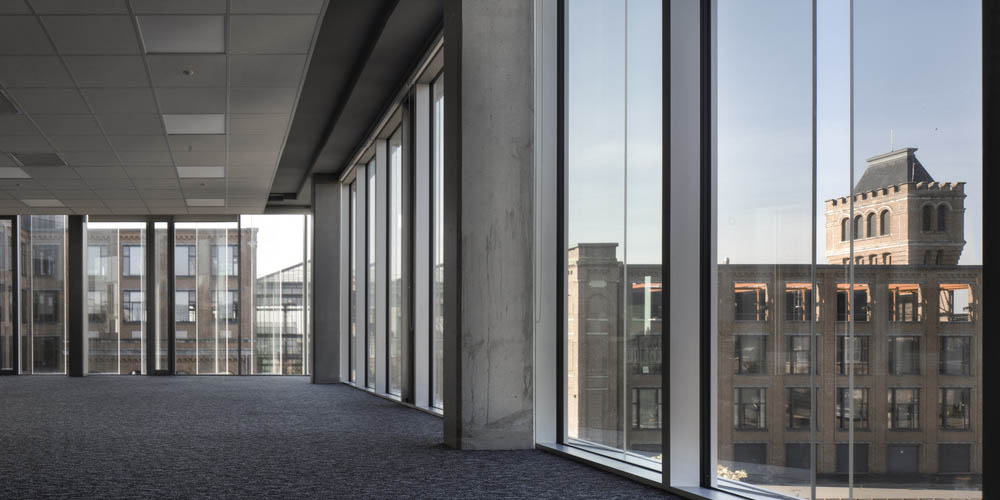
The internal layout of the building comprising of prestressed lightened concrete slabs combined with an ingenious cooling-ventilation-heating system, built into the thickness of the structural slab/engineered floor complex, which makes it possible to create a fully modular platform at each level, free of columns and networks, enables the creation of a fully modular platform at each level that is free of columns and network cables.
Visual comfort and luminosity are accentuated by the open view, the wide spaces and the grey painted concrete ceiling.
Lucio Office Building is a small precious object, similar to a delicate and evanescent set of glass scales, with elegant proportions and shapes.
It subtly creates a game of transparency and reflections fragmented with its environment. The aim is also to give new neighborhood a new spirit and to go along with its development.


